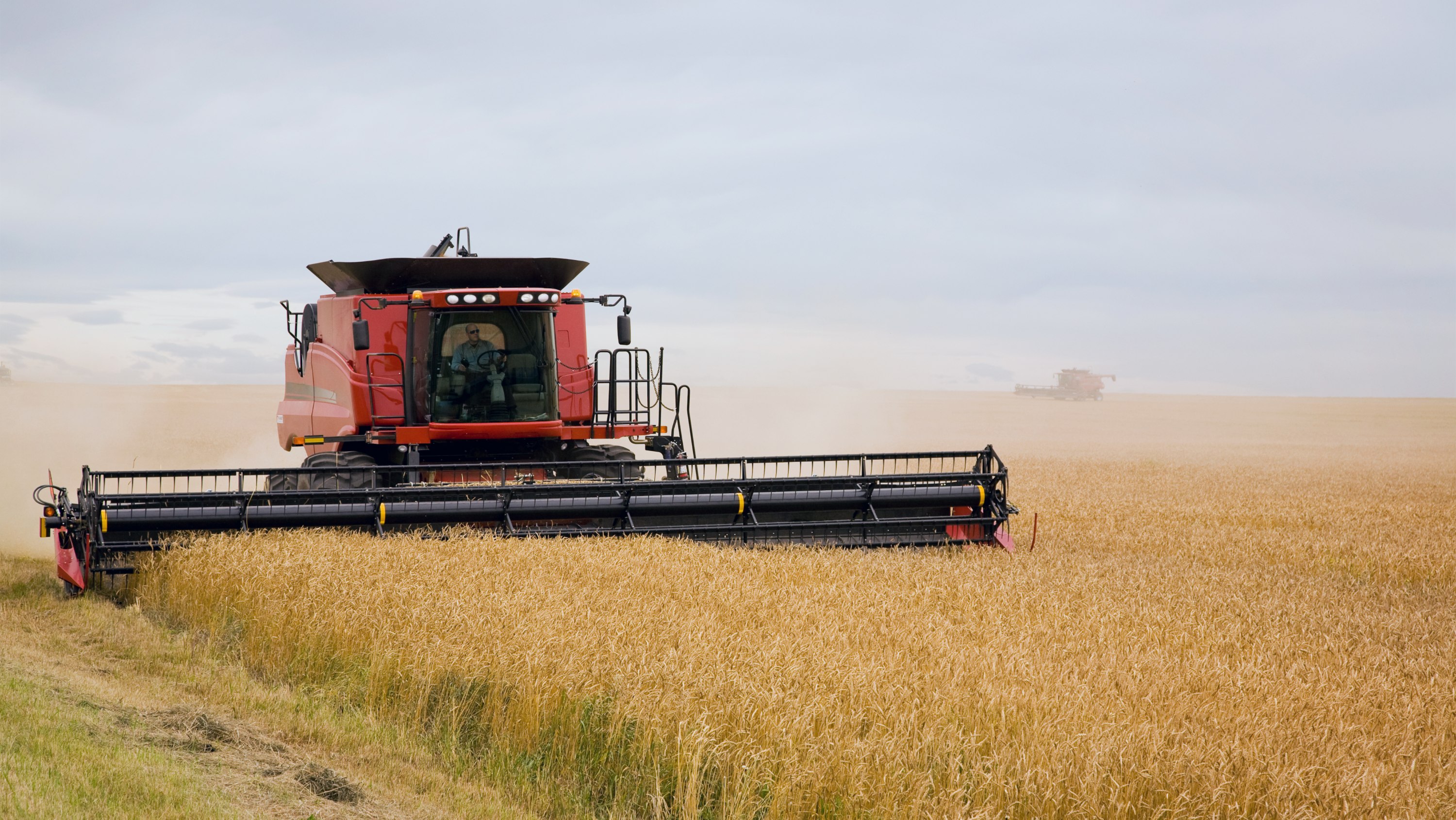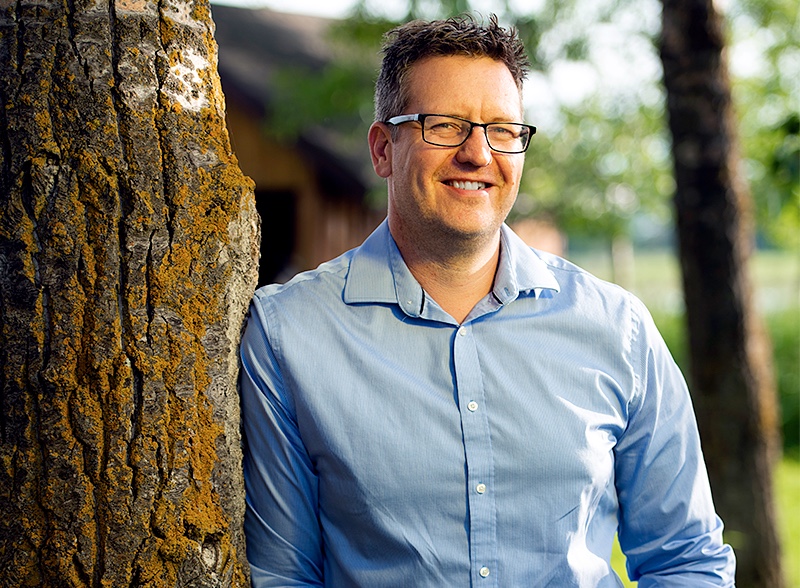An old-time business model could help bring new economic development to rural Alberta, according to University of Alberta research.
Local co-operatives — a common way of doing business in rural areas 100 years ago — still have some potential to create or preserve business and jobs in small communities, suggests a new report from the Alberta Centre for Sustainable Rural Communities (ACSRC) at Augustana Campus.
“There’s an untapped opportunity for different kinds of co-ops to play more meaningful economic roles in smaller communities,” says Clark Banack, director of the ACSRC and lead author of the report.
“The co-op model isn’t going to solve all of the economic issues that rural Alberta communities face, but it should at least be part of the conversation when people are talking about how to address a particular need,” he adds. “Co-ops aren’t always going to be the fit, but sometimes they will be.”
To get an idea of which modern-day co-op models, along with their best practices and supports, are proving successful around the world, Banack and his research team reviewed findings from academic studies focused on local co-ops and rural economic development across Canada, the United States, Europe, Australia and New Zealand.
Closer to home, they also interviewed organizers and members of existing Alberta-based co-operatives including Westlock Terminals, Battle River Railway, the Peace Energy Cooperative, Bow Valley Green Energy Cooperative, EQUS, The Gathering Place and the Vermilion Opportunity Development Co-op.
Case studies of each co-operative revealed that they’ve all helped keep money in their communities, boosted local jobs, added to the tax base and provided opportunities for business skills upgrading in leadership, management, accounting and negotiation, Banack notes.
“In these communities where people can see a successful co-op model, it shows what community collaboration can do and how resilience can be added into rural communities. Even by adding three or four jobs, that can mean more families moving into or staying in a community, which could keep a health clinic or a school open.”
A good fit for rural Alberta
The successful local co-ops reflect three general types identified in the report as being the best fit for rural Alberta, he adds.
“They have a proven track record here, and they tend to fit well into the economic and cultural realities of rural communities.”
The first type, known as new generation agricultural co-ops, is a hybrid designed to allow co-operatively owned agricultural businesses to raise higher levels of capital at the beginning of their venture, usually to invest in some type of value-added processing. The co-op sells multiple versions of shares, including for basic membership and for ‘delivery shares’ required for farmers to use the services of the co-op. Shares are also sold to general investors who wouldn’t use the co-op services but would expect returns.
The second model, classed as community investment or opportunity development co-operatives, invites co-op members to invest in local businesses that need capital to get started. The model then provides modest returns to the investors while supporting growth of small businesses.
The third model the researchers looked at was renewable energy co-operatives. These collectively owned organizations provide cost savings and investment returns for their members while working to transition to sustainable energy.
Best practices for rural co-ops
Founders and members of local co-ops outlined certain best practices they found crucial to success, starting with community buy-in, then having key leaders and committed volunteers, along with nuts-and-bolts support such as a feasibility study, the report notes.
Clear communication between the board of directors and the co-op business manager was also deemed essential, along with a willingness to move in new directions to stay profitable in changing market conditions.
Following those guidelines can make it easier to establish a co-op, Banack says.
“A co-operatively owned small business can be hard to get off the ground; it requires some additional know-how, so following the best practices that come from people who’ve set up a co-op provides guidance on how to navigate this pathway.”
Lessons for rebuilding
The researchers also looked to the American agricultural state of Wisconsin, where, similar to Canada’s Prairies, rural co-operatives played an important role in the past.
But unlike Alberta, where many co-ops were sold to the private sector over the years, Wisconsin’s co-ops are still numerous and continue to thrive in the form of creameries and cheese factories, along with credit unions and co-ops for housing and rural electrification.
A review of the state’s co-op system, including interviews with organizers and government representatives, revealed a “supportive culture” for the business model, Banack notes.
“Belief in the model has really persisted there, and there’s an openness to considering it as an option when a particular need arises,” he says. “As a result, there’s a lot of political support across the board.”
The Wisconsin case study provides lessons for how rural Albertans can rebuild their own systems of co-operatives, the U of A report suggests.
Existing co-ops can raise awareness of the model in contemporary rural Alberta by pursuing education campaigns and lobbying their governments for support, Banack says.
In turn, governments can provide legislation to ease the startup process for rural co-ops, he adds, noting that Wisconsin has relaxed regulations to make it easier for people to invest in co-ops.
Similar support from all three levels of Canadian government can play a part in increasing the likelihood of success for rural co-ops, the report suggests.
Federal and provincial governments could consider legislation to provide tax credits, relax some securities regulations to encourage more community-based investment and establish a specific department to work with and for co-ops. At the municipal level, governments could provide flexible zoning and taxation to help in the startup stage, the report recommends.
Along with that, government funding could help large membership-based organizations such as Federated Co-operatives Limited support the hiring of professional co-op developers. Their expert advice can help launch and operate successful co-ops, the researchers were told.
“In every single case study we examined, the help and advice of co-op developers was crucial,” Banack notes.
The report has been shared with rural community leaders, residents, councillors and economic development and planning officers, along with other government policy-makers.
“We’ve received a lot of positive feedback,” Banack says. “We’ve also had people in communities reach out to connect with co-op developers, so there’s interest in pursuing this model.”
Supporting the co-operative sector is an important step toward “community-led solutions” that can strengthen rural economic development, Banack adds.
“It’s usually the case that a one-size-fits-all approach doesn’t work; there are differences among communities that have to be taken into account. The groups best situated to understand these differences are the people in the community, and they’re going to be the most passionate about making a co-op work.”
The research project was funded by the Alberta Real Estate Foundation.

